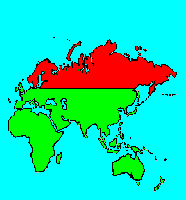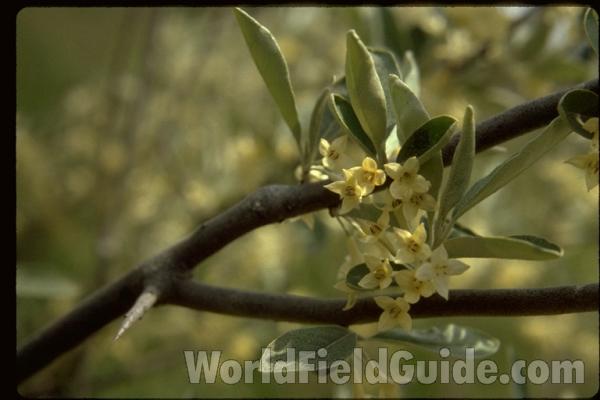SPECIES INFO
Autumn Olive, Japanese Silver Berry, or Spreading Oleaster (Elaeagnus umbellata) is native to the Orient and Himalayan Mountains. This species is also established in North America. This is a shrub or small tree that grows to 28 feet tall. There are several named varieties. The fruits are found in close bunches of bright red berries.
This species is now considered an invasive weed in parts of Illinois and Indiana. Some contend that it grows so thickly that it kills native plants below it, and is impenetrable for native wildlife.Elaeagnus genus (oleaster) is native to Asia, southern Europe and North America. There are about 40-50 species of deciduous or evergreen shrubs and trees in this genus. The leaves and branches are frequently covered with silver or brown scales. The small flowers are in the leaf axils. There are six species now growing in greater North America.
Oleaster Family (Elaeagnaceae) contains approximately forty-five species of bushes and trees found in the temperate Northern Hemisphere. There are ten species arranged in three genera growing in greater North America.
Most members of the family are erect shrubs with a few trees. Leaves can be alternate, opposite, or whorled. The fruit is a drupe (seed enclosed by a fleshy exterior.) The flowers have 4 lobes (sometimes 2 or 6).
Myrtiflorae Order is an assemblage of over twenty different families.
Dicots (Dicotyledoneae Class) are the predominant group of vascular plants on earth. With the exception of the grasses (Monocots) and the Conifers (Gymnosperms), most of the larger plants that one encounters are Dicots. Dicots are characterized by having a seed with two outer shell coverings.
Some of the more primitive Dicots are the typical hardwood trees (oaks, birches, hickories, etc). The more advanced Dicots include many of the Composite (Aster) Family flowers like the Dandelion, Aster, Thistles, and Sunflowers. Although many Monocots reach a very high degree of specialization, most botanists feel that the Dicots represent the most advanced group of plants.
Seed plants (Phylum Embryophyta) are generally grouped into one large phylum containing three major classes: the Gymnosperms, the Monocots, and the Dicots. (Some scientists separate the Gymnosperms into a separate phylum and refer to the remaining plants as flowering plants or Angiospermae.)
For North American counts of the number of species in each genus and family, the primary reference has been John T. Kartesz, author of A Synonymized Checklist of the Vascular Flora of the United States, Canada, and Greenland (1994). The geographical scope of his lists include, as part of greater North America, Hawaii, Alaska, Greenland, Puerto Rico, and the Virgin Islands.
Kartesz lists 21,757 species of vascular plants comprising the ferns, gymnosperms and flowering plants as being found in greater North America (including Alaska, Hawaii, Greenland, Puerto Rico and the Virgin Islands.
There are estimates within the scientific world that about half of the listed North American seed plants were originally native with the balance being comprised of Eurasian and tropical plants that have become established.
Plant kingdom contains a large variety of different organisms including mosses, ferns, and seed plants. Most plants manufacture their energy from sunlight and water. Identification of many species is difficult in that most individual plants have characteristics that have variables based on soil moisture, soil chemistry, and sunlight.
Because of the difficulty in learning and identifying different plant groups, specialists have emerged that study only a limited group of plants. These specialists revise the taxonomy and give us detailed descriptions and ranges of the various species. Their results are published in technical journals and written with highly specialized words that apply to a specific group.
On the other hand, there are the nature publishers. These people and companies undertake the challenging task of trying to provide easy to use pictures and descriptions to identify those species.


